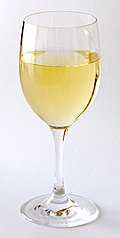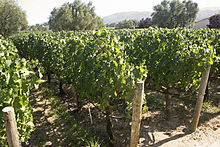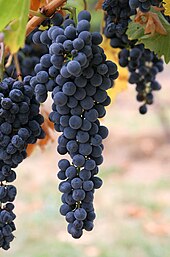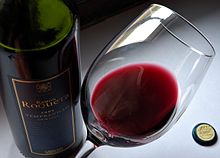Wine Spectator is a lifestyle magazine that focuses on wine and wine culture. It publishes 15 issues per year with content that includes news, articles, profiles, and general entertainment pieces. Each issue also includes from 400 to more than 1,000 wine reviews, which consist of wine ratings and tasting notes.[1]Among the critics in the magazine's tasting panel are James Molesworth, Kim Marcus, Bruce Sanderson, Harvey Steiman, James Laube and from 1981 to 2010, James Suckling.[2][3] Thomas Matthews is the executive editor.
Founded as a San Diego-based tabloid newspaper by Bob Morrisey in 1976, Wine Spectator was purchased three years later by current publisher and editor Marvin R. Shanken.[4] That year, its panel of experts blind tasted and reviewed over 12,400 wines[citation needed].
In 1981 the magazine introduced its Restaurant Awards program, which reviews restaurant wine lists on three levels: the Award of Excellence (basic), Best of Award of Excellence (second-tier), and the Grand Award (highest). As of 2009 over 3,500 restaurants held one of these awards.[5].
The magazine organized and sponsored the Wine Spectator Wine Tasting of 1986 on the tenth anniversary of the "Judgment of Paris".
In 2008 the magazine was ranked by the Luxury Institute as the #1 business and consumer publication among wealthy readers[6].
Other activities
Wine Spectator operates the Wine Experience, a yearly event that includes wine tastings and seminars. In 2009 over 1,000 people attended in New York City where 335 different wines were poured.[7]
The magazine also runs the Wine Spectator Scholarship Foundation, which has raised more than $10.9 million to support wine and food education and scholarship programs.[7]
Criticism
The magazine's Restaurant Awards program has since come under some criticism.[8][9] At the August 2008 conference of the American Association of Wine Economists in Portland, Oregon, a hoax exposé submission of the fictitious restaurant Osteria L’Intrepido was revealed by the author and Fearless Critic founder Robin Goldstein: he had won an Award of Excellence for a restaurant that didn't exist and whose "reserve wine list" was full of the lowest-rated Italian wines in history. He stated the exposé to be part of research for an academic paper[10], whose aim was to discover what it takes for a restaurant's wine list to receive an award from the magazine.[9][11][12][13][14] With nearly 4,500 restaurant applications, the magazine earns over $1 million each year from submission fees.[15][16] Editor Thomas Matthews published an official response on the magazine's forum site.












